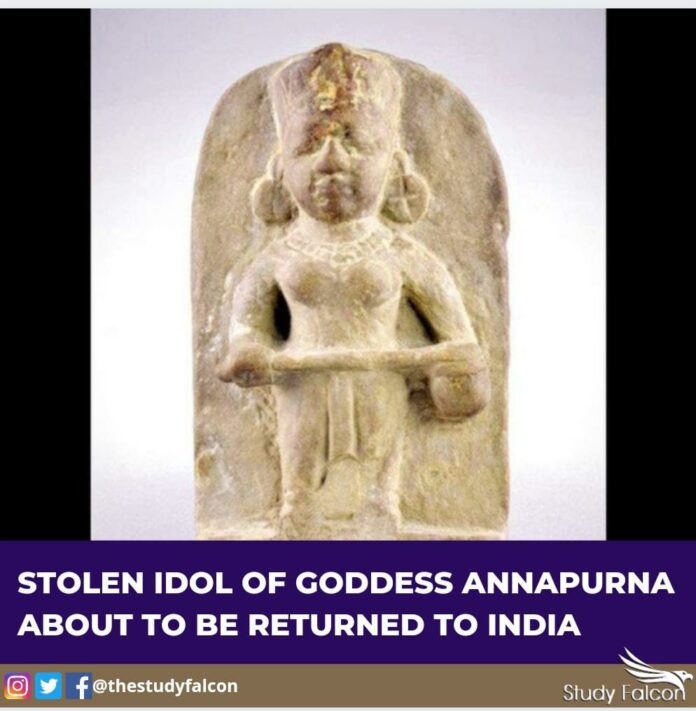Prime Minister Narendra Modi, in his November 29 episode of Mann Ki Baat, announced that an ancient idol of the goddess Annapurna is now being brought back from Canada.
Prime Minister expressed his concerns regarding Annapurna idol, he was delighted to announce that the idol that was smuggled out of India was being brought back from Canada. This idol was stolen from a temple of Varanasi and was smuggled out of the country around 100 years ago, somewhere around 1913.
“Mata Annapurna has a very special bond with Kashi [Varanasi]. And the return of the idol is very pleasant for all of us. Like the statue of Mata Annapurna, much of our heritage has been a victim of international gangs.”
Annapurna also spelt as Annapoorna, is the goddess of food. The idol belongs to the 18th-century, carved in the Benares style, is part of the University of Regina, Canada’s collection at the MacKenzie Art Gallery. Last year, a Winnipeg-based artist Divya Mehra was invited to stage an exhibition at the gallery and she began to research the collection, which was built around a bequest from lawyer Norman MacKenzie in 1936. One sculpture thought to represent Lord Vishnu struck her as female; it was holding a bowl of rice. Looking into records, she found that the same sculpture had been stolen from an active temple in 1913 and acquired by MacKenzie.
The curator of Indian and South Asian Art at Peabody Essex Museum, Mr. Siddhartha V Shah, was asked to identify the statue. He confirmed it was indeed of the goddess Annapurna. She holds a bowl of kheer an Indian dessert made from rice in one hand and a spoon in the other. These are items associated with the goddess of food, who is also the deity of the city of Varanasi.
During the research, Mehra concluded that MacKenzie had noticed the statue during a trip to India in 1913. A stranger had overheard McKenzie’s desire to have the statue, and stole it for him from a temple on stone steps on the riverbank in Varanasi.
John Hampton, who is the interim CEO at the MacKenzie Art Gallery, was requested to return the idol and the Gallery agreed. This process of return would be assisted by the Indian High Commission in Ottawa and the Department of Canadian Heritage.
The statue is set to begin its journey to India in December. A virtual repatriation ceremony had already taken place in early November. Vice-Chancellor Thomas Chase of University of Regina also supported this process which according to him was a ‘responsibility to right
historical wrongs.’ This would also help to ‘overcome the damaging legacy of colonialism wherever possible.’
The idol is expected to land in Delhi in the middle of December, as per sources in the Archaeological Survey of India (ASI), who are the official custodians of all such repatriated artefacts. A thorough verification and documentation will be carried out, after which a decision will be taken about its final custody. The PM has said the statue will be back in Kashi; the ASI has tasked with ascertaining the security arrangements at the idol’s original location before handing it back to trustees at the temple.
Few weeks ago, Union Culture Minister Prahlad Patel handed over 13th-century bronze idols of Lord Rama, Lakshmana and goddess Sita, to the Tamil Nadu government which were repatriated from the UK.
Between 2014 and 2020, the government has been able to retrieve 40 antiquities from various countries; between 1976 and 2014, as per ASI records, 13 antique pieces had been repatriated to India. Patel had said the return of another 75-80 stolen antique pieces is in the pipeline, but the legal process takes a long time.
There have been various discoveries in terms of stolen artefacts. The primal motive that comes forth with stealing of ancient artefacts is its market value, as it is smuggled out of the country and sold for tremendously high prices. Discovering of artefacts is also a struggle, it might be based on pure co-incidence or years of finding.










